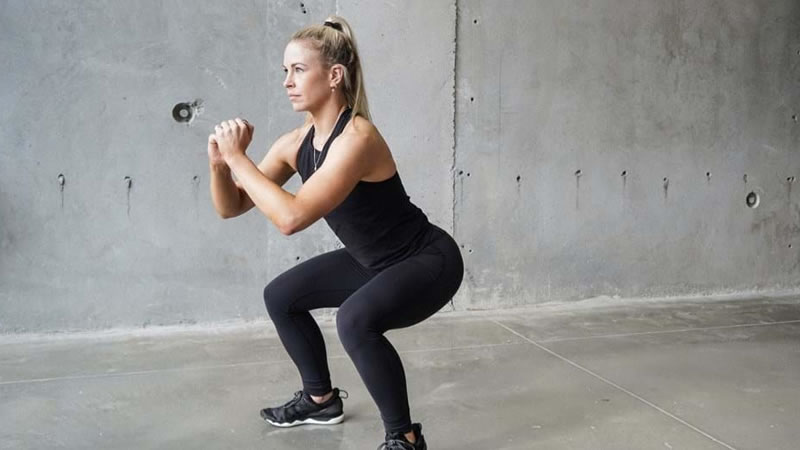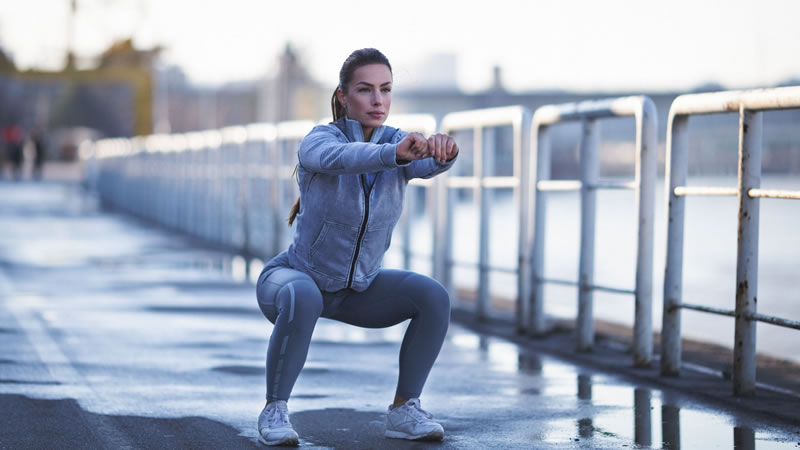
8 Reasons You Should Do Squats Every Day
Share0When you picture a quintessential butt exercise, what’s the first thing that comes to mind? Say it with me: Squats! But is it cool to bust out squats every day, or at least regularly? Or is possible to overdo this ~classic~ move?
Well, for starters, you probably do a ton of squats every day already—each time you sit down and stand up you’re doing a version of the exercise, after all. And that’s one of the beautiful benefits of mastering the move: You can seamlessly incorporate it into your daily routine.
“I tell my clients to do squats regularly wherever and whenever they can,” says Katrina Pilkington NASM-certified personal trainer who specializes in women and youth. “There’s really no way to overdo them unless you’re using excessively heavy weight during training. In that case, you want to take rest days in between for muscle recovery.”
To convince you to incorporate more squats into your regular routine—whether at the gym or at home—Pilkington reveals the top pay-offs of the move. Here’s what you need to know about dropping it low.
- You get stronger for daily activities
As mentioned, any time you go from sitting to standing and back down again, you’re doing a squat. So the more you practice the move, the stronger you get—and that makes the movement easier each time. “So many actions can stem from the movements of a squat, from picking up your toddler to loading boxes into the house after a delivery,” Pilkington says.
“If you work to perform squats on a regular basis, using form that is on-point, you’re sure to avoid injuries, and build a strong foundation for functional movement.”
- You get a complete leg workout
When you do a proper squat, you strengthen a ton of muscles in your legs. As you lower down, you’re primarily working the hamstrings and when you stand up, you’re targeting both the glutes and the quadriceps, Pilkington explains.
To make sure you’re doing it right, do a quick form check in the mirror and go through these check points from Pilkington:
Your feet should point straight forward or just slightly outward, hips move down and back, and knees track over your second and third toe.
Aim to keep knees behind your toes and don’t let them cave in toward each other. (Squats shouldn’t strain the knee joint.)
Your shoulders should also be down and back and chest open, with a neutral spine.
- You also strengthen your core
While squats focus mostly on strengthening the legs, you also have to work to stabilize the core, says Pilkington. In order to keep your chest up, spine straight, and shoulders back and down, you have to engage the muscles of your abs and back. To keep the core engaged, take a nice big inhale as you lower down, and exhale as you stand.
This is one of the reasons squats stand out from other lower body exercises: You use so much more than your legs. “When performing a squat properly you also activate your lats, abs, glutes, and hip flexors,” says Brittany Watts, NASM-certified personal trainer at Performix House.
- You can do them any time, any place
It’s so easy to incorporate bodyweight squats into your daily schedule—after all, you only need your legs to do ‘em. Pilkington recommends throwing them in during a bathroom break, grabbing friends for a few after lunch, dropping it low while something is cooking on the stove, or even busting a move in between episodes of Friends. Watts also suggests starting your day out with 20 reps before you leave for work.
- You can switch things up with variations
Put a resistance band around your knees. Place a barbell on your shoulders. Turn your toes out, or step your feet wider. Lift your heels up and score more activation in the calves. There are countless ways you can switch up your squat, whether you add more weight, use different equipment that turns up the burn, or you shake up your stance, says Pilkington.

That’s what makes it easy to do squats every day without taxing your body too much or getting insanely bored. All you have to do is try a new variation.
(Check out these squat variations for some inspo.)
- You can sneak in some cardio
Another way to mix up your squat routine: switch up the tempo or turn it into a full-on cardio workout, says Watts. Rev your heart rate by doing squat jumps, where you explosively hop up toward the ceiling and then land lightly back on your feet.
You can make this an AMRAP (as many reps as possible in a designated time) or EMOM (every minute on the minute do 20 reps) workout.
Ready to make squats part of your workout routine? Try this butt-focused circuit workout from Kelsey Wells:
- You can prep for delivery (or a pee break)
As you engage your core through squats, you also work your pelvic floor—important if you’re preggers and want to prepare for delivery, says Pilkington. Also, picture those moments when you’re hovering over a toilet or hey, even taking a much-needed bathroom break outside. You need a strong squat to hold that position, so the more you do them, the easier it becomes to pause in that static pose.
- You give your bones a boost
“Regular strength training helps increase lean muscle mass and creates support for our bones,” says Pilkington. “The femur—your thigh bone—is the largest bone in the body and holds onto the largest muscles in the body—a.k.a. the glutes. So why not strengthen this muscle the most?”
Watts also mentions that the more muscle you have, the more calories and fat you burn throughout the day. It’s just that good of a move.
